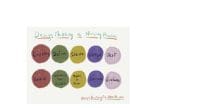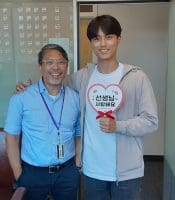Nurses and engineers serve vital roles in health and healthcare, creating, designing, and implementing solutions to problems big and small. Partnering nursing students with engineering students provides an immense opportunity to combine these two disciplines and allows each respective student group to learn from the other early in their academic careers and expand their way of thinking. Below, one of our University of Pennsylvania School of Nursing (Penn Nursing) students, Jessica Abene, describes her experience working with a team of engineering students on an innovation project and explains the importance of this type of interdisciplinary collaboration.
When you think of a nurse, do you think of an innovator? The most common response is generally no. Most people only view nurses as bedside healthcare workers when they use their skills and knowledge in a much broader way. Nurses can have a considerable impact on policies and procedures, but also on the creation and implementation of technologies used in healthcare.
When I decided to attend nursing school at the University of Pennsylvania, I never thought I could participate in healthcare innovation. During my freshman year, I saw and heard about some of my classmates’ innovative work at Penn. It intrigued me that nurses could create useful technology that healthcare workers could use for inpatient care.
I had my first clinical experience through my nursing 101 class in a neonatal intensive care unit (NICU). The NICU dedicated a whole section to care for infants with neonatal abstinence syndrome (NAS). These infants are essentially born addicted to drugs and suffer through withdrawal after they exit their mother’s uterus. It moved me to see these infants in such distress, and I wondered what could be done to help them.
About a year later, a group of engineering students approached me through a GroupMe (a texting app that clubs use to members can communicate via group chats) club about my clinical experience with babies with NAS. The engineering students also wanted to create an innovative way to help comfort these infants during their withdrawal. After discussing the patient population more in-depth, we decided to work together on a new smart swaddle system specifically designed to help comfort these infants.
While working with these students, I saw firsthand how their technical skills and engineering education could complement my clinical skills and nursing education. Because nurses spend a great deal of time one-on-one with patients, they have unique insight into what can truly make the patient experience better and healthcare more efficient. Engineers know how to create those healthcare innovations and put them into practice. I mainly provided the clinical background for our team while the engineers coded and designed the prototypes.
Working with my engineering student colleagues, I expanded my knowledge outside of the traditional nursing curriculum. I learned the various steps and barriers encountered when creating a prototype, how to develop and project budgets, and how to begin the internal review board approval process.
Nurses should not be overlooked during the health and healthcare innovation process. Without a clinical background, it would be nearly impossible to create products for healthcare that are not only useful but practical. Nurses understand what innovations are needed and which can realistically be integrated into practice.
Through my collaboration with the engineering students, I learned how valuable interdisciplinary projects are in college. Generally, undergraduate schools are viewed as separate disciplines and rarely do students in different areas work together on projects. I believe that undergraduate education would be more valuable if students from the different schools understood how to utilize their peers’ strengths to learn together. Professionals from various backgrounds work together to create innovations in the real work environment, so why shouldn’t students? For other nursing students looking to collaborate with engineering students, I recommend reaching out to them—it can never hurt to ask!
To learn more about nursing and engineering, check out our Penn Nursing Innovation Colloquium, Need for Nurse Engineers, and the associated article from the Leonard David Institute, The Accelerating Quest to Cross-Train Nurses as Innovative Bioengineers.
Reference
Kocherlakota P. Neonatal abstinence syndrome. Pediatrics. 2014;134(2):e547-61. doi:10.1542/peds.2013-3524


















